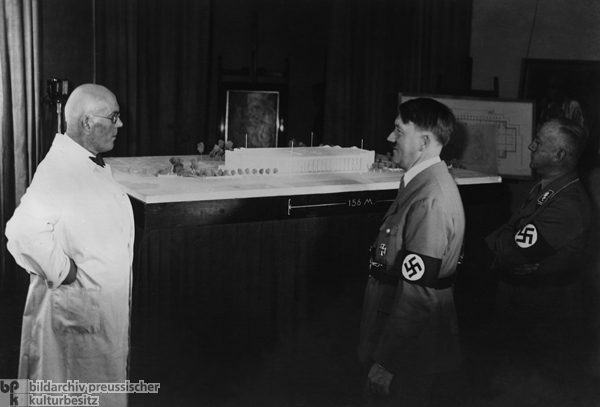













INTRODUCTION | DOCUMENTS | IMAGES | MAPS | EDITOR
|
Hitler dreamt of completely reshaping Germany’s architectural landscape. For his Thousand-Year Reich, he preferred massive neo-classical buildings that delivered a message of power, severity, and stability. As a young man, Hitler had wanted to become an artist or an architect himself but was denied admission to Vienna's Academy of Fine Arts. After becoming chancellor, Hitler continued to take a passionate interest in art and architecture, putting both in the service of his totalitarian state. One of Hitler's favorite architects was Paul Ludwig Troost (1879-1934) (left). Troost, a member of the Nazi party since 1924, had made a name for himself in 1931, when he remodelled the former Palais Barlow into the Munich headquarters of the NSDAP (the building came to be known as the "Brown House"). Construction on his most famous work, the House of German Art, began in 1933. Troost's enormous, colonnaded, neo-classical museum was the Reich's first representative monumental structure. Troost would never see its completion, however, as he died in January 1934, a few months after the cornerstone had been laid. (Work continued under the direction of his wife, Gerdy Troost.). The museum officially opened on July 18, 1937. Photo by Heinrich Hoffmann.
© Bildarchiv Preußischer Kulturbesitz / Heinrich Hoffmann |
 print version
print version return to image list
return to image list previous image
previous image
